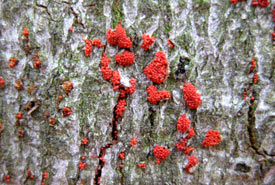Join the invasion at Hazel Bird
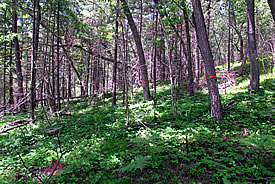
Hazel Bird Nature Reserve, ON (Photo by NCC)
When visiting the Nature Conservancy of Canada's (NCC's) Hazel Bird Nature Reserve in Ontario, you are greeted by a stunning grassland prairie with strong, looming oaks scattered delicately within the fields. You see the occasional shift of the grass as a snake slithers by as open your ears to the calls of blue birds and towhees breaking the silence. The sandy soils make the trails soft on the soles of your feet, and the rolling hills make for amazing views of the Rice Lake Plains.
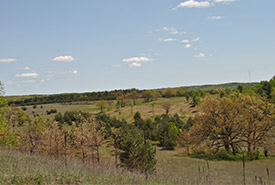
The beautiful view overlooking NCC’s Hazel Bird Nature Reserve, ON (Photo by NCC)
This summer, our conservation team is taking a close interest in the control and management of different kinds of invasive species in order to help rehabilitate NCC lands to their historic ecological function. The Hazel Bird Nature Reserve is a victim to several invasive species, one of these being Scotch (or Scots) pine. The introduction of this tree, which is originally from Eurasia, to Canada has caused a decline in native species such as oak trees, prairie grasses, grassland birds and eastern hog-nosed snakes.
What is it that we’re doing to help restore this area back to its former glory? To begin with, we monitor Scotch pine and track its growth to develop a plan of action. We want to know all about this area. So if you’re heading out to the Hazel Bird Nature Reserve, or any natural area for that matter, make sure to download the Early Detection & Distributing Mapping System (EDDMaps) app on your smartphone. This way you will be able to identify and report invasive species on the spot. There’s also the invasive species hotline (1-800-563-7711) to call and we would love to get everyone involved in the monitoring of invasive species. After all, you travel these lands too!
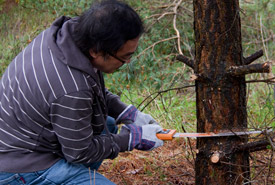
NCC staff work to remove non-native Scotch pine, Hazel Bird Nature Reserve, ON (Photo by NCC)
After we’re informed on where invasive species are located, we hit the fields and put our knowledge to work. We begin to remove any invasive species using recommendations from the Ontario Invasive Plant Council (OIPC). These include manual cutting and pulling of invasive plants. For example, we cut down Scotch pine to ensure the removal of any photosynthesizing pieces (before seeds begin to fall). This will allow black, white and black oaks to flourish again, using the decomposing Scotch pine as nutrient-rich fertilizer.
In large areas, bush hogging (a pull-behind mower, usually pulled by a tractor) can take place. This is what NCC did for Scotch pine removal at Hazel Bird in 2009. Scotch pine, when cut down in the correct manner, doesn’t require chemical treatment, as it will not grow back from the stump. Another method of restoring black oak savannah habitat is through prescribed burns. This aids in resetting the natural growth at Hazel Bird, especially in a black oak savannah system in which fire-tolerant species live.
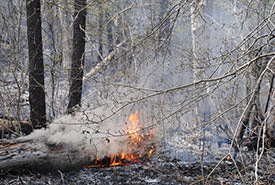
Prescribed burn on Hazel Bird property, Rice Lake Plains, ON (Photo by NCC)
Other tactics are also available, including girdling. Girdling, which involves removing a 10-centimetre strip of the tree's bark and phloem (the outer layers of a tree) in order to deprive it of water and nutrients from the soil, is a useful method of removal for large individual Scotch pines. However, this is a very time-consuming method that requires planning, and, therefore, it can be costly. The largest reason for the resilience of invasive species is that it is difficult to cut off the area from the seed source as it is often on non-NCC properties.
While I have enjoyed contributing efforts to conservation work at Hazel Bird Nature Reserve, there’s still much work to be done! From cutting down Scotch pine, to buckthorn removal, to pulling spotted knapweed and planting grasses, we’re working to achieve our goal for this land — to restore it to the striking beauty that is the savannah grasslands.

